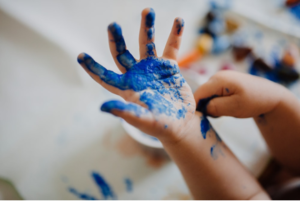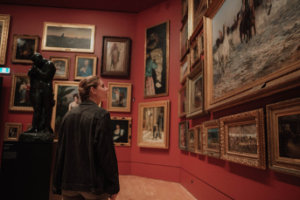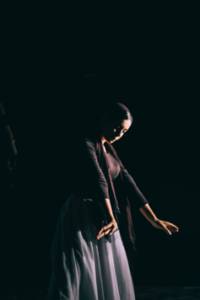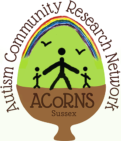If you would like to sign up for our next Autism Reading Group please email acorns@sussex.ac.uk
What is creativity and how can we measure it?
Creativity is hard to define and it’s also hard to pinpoint when someone is being creative or not. In our meeting we said that everyone can be creative and potentially has a talent they excel at which doesn’t have to be within the typical art, music and writing realms.  We discussed an article in The Conversation which cited a paper that measured creativity in terms of how many innovative uses people could come up with for common objects. It was found that autistic people came up with suggestions with more originality. But should creativity be measured in this single-shot way? Creativity often happens over time and isn’t restricted by a time scale, which we said was a limitation of this study. Who decides what is original and what is creative? Following this idea is the subjectiveness of art: some like certain art more than others. This is of course a much debated question. This highlights that creativity can be presented in diverse ways. We felt that creativity could be expressed in forms of thinking, creating patterns such as lining things up, doing maths equations and building/creating online, for example through tools such as Minecraft. We said that being creative isn’t always about producing a material object but can be the ability to see things in a different way and to ‘think outside the box’.
We discussed an article in The Conversation which cited a paper that measured creativity in terms of how many innovative uses people could come up with for common objects. It was found that autistic people came up with suggestions with more originality. But should creativity be measured in this single-shot way? Creativity often happens over time and isn’t restricted by a time scale, which we said was a limitation of this study. Who decides what is original and what is creative? Following this idea is the subjectiveness of art: some like certain art more than others. This is of course a much debated question. This highlights that creativity can be presented in diverse ways. We felt that creativity could be expressed in forms of thinking, creating patterns such as lining things up, doing maths equations and building/creating online, for example through tools such as Minecraft. We said that being creative isn’t always about producing a material object but can be the ability to see things in a different way and to ‘think outside the box’.
Creativity in autism is different but amazing/important
We started our conversation talking about how creativity in autism needs to be looked at in a different way. Instead of measuring creativity from neurotypical views, we could be more open about what can be creative. Autistic people might be less constrained by societal norms when creating. Autistic people can provide novel perspectives that some neurotypical people would not reach. The article mentioned a remarkable artist, Stephen Wiltshire, who has a diagnosis of autism. His artworks are incredibly detailed city landscapes which he draws from his own memory after looking at the landscape only briefly. The artwork features traits common in autism, such as attention to detail and incredibly accurate memory. Some people noted that that we shouldn’t categorise an autistic person’s art as ‘autistic art’ but rather just as ‘art’. It is still art whether or not someone has these “stereotypically autistic traits”.
We moved on to discuss how autistic people may be creative in ways many neurotypical people wouldn’t think of. For example, one member mentioned an autistic child who uses different movements and sounds in creative ways to give themselves a new sensory experience. Another mentioned some autistic students who wrote a song without aspects of ‘normal’ music such as having a chorus or a genre. This highlights the idea that autistic people don’t feel the need to conform to expectations and the constraints of what ‘should’ be in a song, which is part of creativity. Looking more broadly beyond the neurotypical, Carousel radio is a podcast featuring songs, poems and stories by artists with a learning disability, supporting development of this group’s potential in the arts.
Schools have an important role
We moved on more specifically to talk about creativity in education and how schools could encourage creativity. The National Curriculum has specific focuses, such as STEM (Science, Technology, Engineering, Maths) which certainly are creative but not for every child. We thought it was important to allow children the time and space to develop interest in other creative subject too such as drama, art, music, dance. Especially in secondary schools, constraints in the curriculum can restrict children into finding out their creative interests and developing them. We spoke about the importance of drama for autistic children where they can play out social situations in a safe space. Drama can be especially valuable for autistic children in terms of developing their social understanding. An exciting project at the University of Kent is looking at drama and autism in teenage girls, linked here. 
For some autistic children having a special interest and engaging in it regularly can be good for their emotional regulation. This is sometimes called a ‘safe subject’. Including this special interest may be beneficial for their learning: for example, one teacher used an autistic child’s interest in trains by incorporating the periodic table into a train timetable. We wondered if our readers can recall any similar techniques being used?
